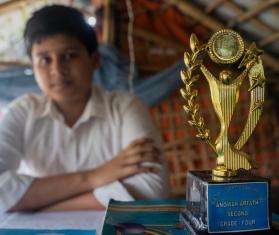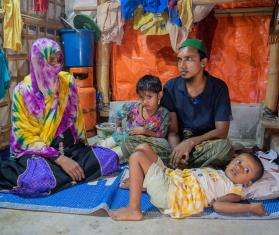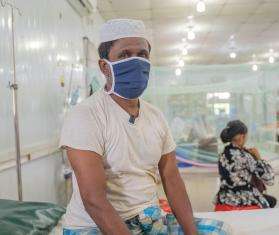On August 25, 2017, the Rohingya people in Myanmar were the targets of a large-scale campaign of merciless violence. More than 700,000 people fled for their lives across the border into Bangladesh in a matter of weeks, joining thousands who had fled previous attacks. Today, nearly one million Rohingya still live in crowded, unsafe, and unsanitary conditions in what is now the largest refugee camp in the world in Cox's Bazar.
To mark five years of continued displacement with no solution in sight, Doctors Without Borders/Médecins Sans Frontières (MSF) gathered testimonies from people of different generations with different concerns and fears: Tayeba, a mother of five-year-old twins; 15-year-old Anwar, who misses school and wants to become a doctor; Nabi and Nasima, the parents of young children; Hashimullah, a 45-year-old former businessman; and 65-year-old Mohamed, who worked in the Myanmar government for decades before he and his people were stripped of their citizenship.
This is Tayeba Begum's story.
My twin girls, Nur Ankis and Nur Bahar, were only six-month-old babies when we escaped from our homeland in Myanmar. I ran with them. All we had with us were the clothes we were wearing. After the killings began, we couldn’t stay in Myanmar any longer; we had to save ourselves. The military was brutally murdering Rohingya and burning their houses.
Even two years prior to our leaving in 2017, young men were being taken and tortured. At the time, my son was afraid and left for India. He’s still there.
When I fled with my babies, we crossed jungles and muddy roads in the soaking rain to get to Bangladesh. The journey was difficult, especially with children. After reaching the border, people were resting wherever they could, but there was nowhere to shelter. We sat in the bushes or under trees if it rained heavily, waiting and hoping for assistance.
We ate whatever we could find to survive. My daughters became weak and vomited whenever I tried to feed them. They suffered for a long time as it was difficult to find medicine when we arrived.
A few days after our arrival [at Cox’s Bazar], shelters were built for us out of cloth and bamboo. Now, we live here in the refugee camp. My twins are five years old now. It has been five years of living in distress.
We have shelter, but beyond that, we do not have much for our children. We depend on food assistance and worry about what to feed them and if it’s enough. We worry about how to clothe them and how to educate them.
I cannot provide what they need as I have no money. Sometimes I eat less than I should because, in my heart, I want to sell the extra food to buy my children something. This is how we are living—half fed. Otherwise, I cannot buy my children anything.
Sometimes I hear from my son in India. He calls every two or three months. I don’t have a mobile phone and can only speak with him when he calls someone else’s.
I have not seen him for years, and I miss him and my home in Myanmar terribly. I long for peace. If we can ever live peacefully again in Myanmar, we will return. Why wouldn’t we return if justice is served to us, and we are given citizenship? Is it not our homeland also? But how can we return if our rights are not ensured? Where will we live, since our houses have been destroyed? How can we go back if our children could be taken away and murdered?
You can keep us here or transfer us to another country, we will not refuse, but I would not go back to Myanmar without justice being served.




